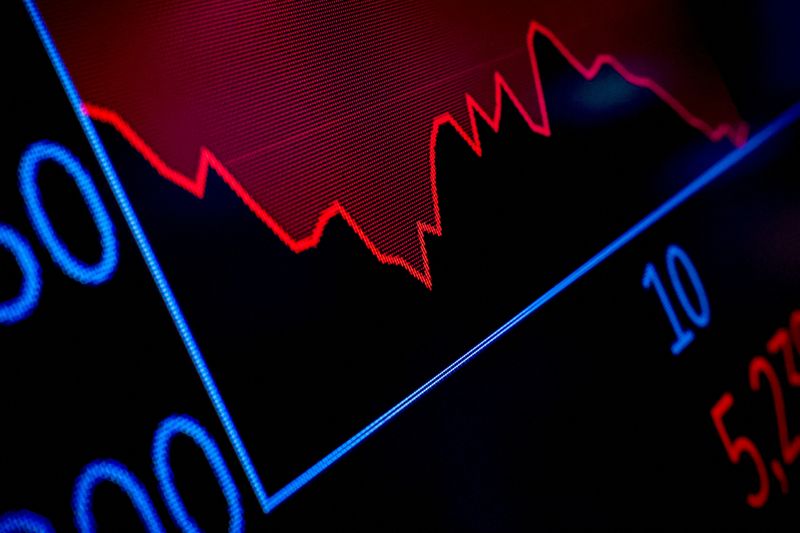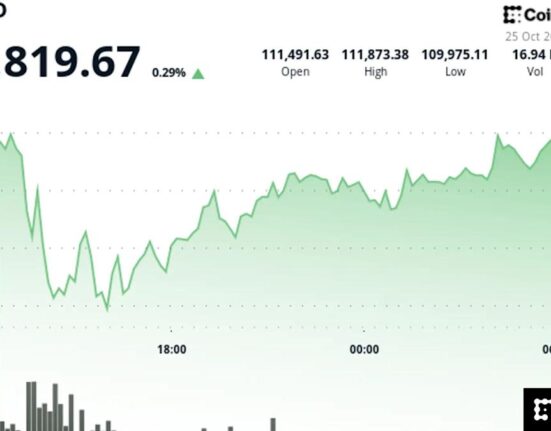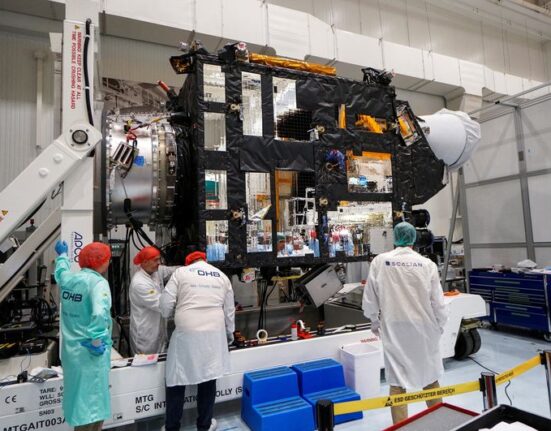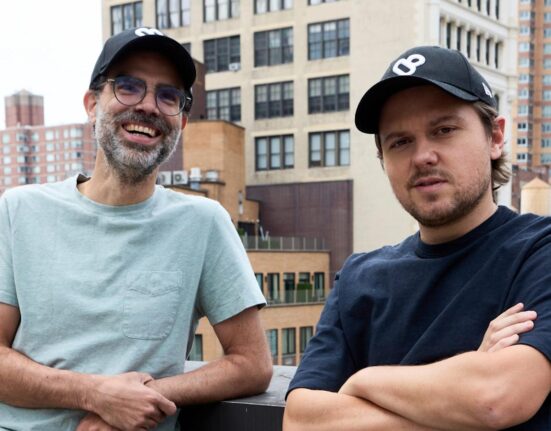By Naomi Rovnick
LONDON (Reuters) -Major investors, spooked by AI exuberance yet wary of betting against it, are shifting from hyped-up stocks into potential next-in-line winners, reviving a strategy from the 1990s dotcom era that helped some sidestep the crash.
As U.S. stocks have hit successive records and AI chipmaker Nvidia‘s valuation has surged beyond $4 trillion, professional investors have been trying to find ways to make money from the bull market while avoiding excessive risk.
Some are looking back to the 1990s internet boom, which spread from startups to telecoms and tech, and where hedge funds rode the wave by flipping out of highly-valued stocks before they peaked and picking others that had room to rise.
“What we are doing is what worked from 1998 to 2000,” said Francesco Sandrini, multi-asset head and Italy CIO at Europe’s largest asset manager Amundi.
He highlighted signs of irrational exuberance on Wall Street, such as frenzied trading in risky options pegged to the share prices of big AI stocks. But he said he expected the new tech enthusiasm to continue and hoped to bank gains via bets on reasonably valued assets that might rally next.
Sandrini said this involved trying to find “the highest growth opportunities that so far the market had failed to spot”, with moves into software groups, robotics and Asian tech.
Other investors also expected to edge out of Wall Street’s Magnificent Seven stocks after shares in Nvidia more than tripled in two years, but want to keep their diversification within the AI sphere.
ASSET MANAGERS NEED TO BE NIMBLE TO RIDE THE WAVE
“The odds of this (AI boom) being a bust are very high because you’ve got companies spending trillions and all fighting for the same market that does not yet exist,” said Goshawk Asset Management CIO Simon Edelsten, who worked on telecom IPOs at stockbroker Dresdner Kleinwort Benson in London in 1999.
He expected the next phase of AI fever to spread from Nvidia and others like Microsoft and Alphabet into related sectors.
Timing the phases of a bubble has historically been a way to play it without the risk of trying to call the peak too early.
A study by economists Markus Brunnermeir and Stefan Nagel showed that hedge funds mostly did not bet against the dotcom bubble, but rode it skillfully enough to beat the market by about 4.5% per quarter from 1998-2000 and avoid the worst of the downturn.
They shed high-priced internet stocks in time to recycle profits into others before they caught the attention of less sophisticated investors.
By Naomi Rovnick
LONDON (Reuters) -Major investors, spooked by AI exuberance yet wary of betting against it, are shifting from hyped-up stocks into potential next-in-line winners, reviving a strategy from the 1990s dotcom era that helped some sidestep the crash.
As U.S. stocks have hit successive records and AI chipmaker Nvidia‘s valuation has surged beyond $4 trillion, professional investors have been trying to find ways to make money from the bull market while avoiding excessive risk.
Some are looking back to the 1990s internet boom, which spread from startups to telecoms and tech, and where hedge funds rode the wave by flipping out of highly-valued stocks before they peaked and picking others that had room to rise.
“What we are doing is what worked from 1998 to 2000,” said Francesco Sandrini, multi-asset head and Italy CIO at Europe’s largest asset manager Amundi.
He highlighted signs of irrational exuberance on Wall Street, such as frenzied trading in risky options pegged to the share prices of big AI stocks. But he said he expected the new tech enthusiasm to continue and hoped to bank gains via bets on reasonably valued assets that might rally next.
Sandrini said this involved trying to find “the highest growth opportunities that so far the market had failed to spot”, with moves into software groups, robotics and Asian tech.
Other investors also expected to edge out of Wall Street’s Magnificent Seven stocks after shares in Nvidia more than tripled in two years, but want to keep their diversification within the AI sphere.
ASSET MANAGERS NEED TO BE NIMBLE TO RIDE THE WAVE
“The odds of this (AI boom) being a bust are very high because you’ve got companies spending trillions and all fighting for the same market that does not yet exist,” said Goshawk Asset Management CIO Simon Edelsten, who worked on telecom IPOs at stockbroker Dresdner Kleinwort Benson in London in 1999.
He expected the next phase of AI fever to spread from Nvidia and others like Microsoft and Alphabet into related sectors.
Timing the phases of a bubble has historically been a way to play it without the risk of trying to call the peak too early.
A study by economists Markus Brunnermeir and Stefan Nagel showed that hedge funds mostly did not bet against the dotcom bubble, but rode it skillfully enough to beat the market by about 4.5% per quarter from 1998-2000 and avoid the worst of the downturn.
They shed high-priced internet stocks in time to recycle profits into others before they caught the attention of less sophisticated investors.












Leave feedback about this